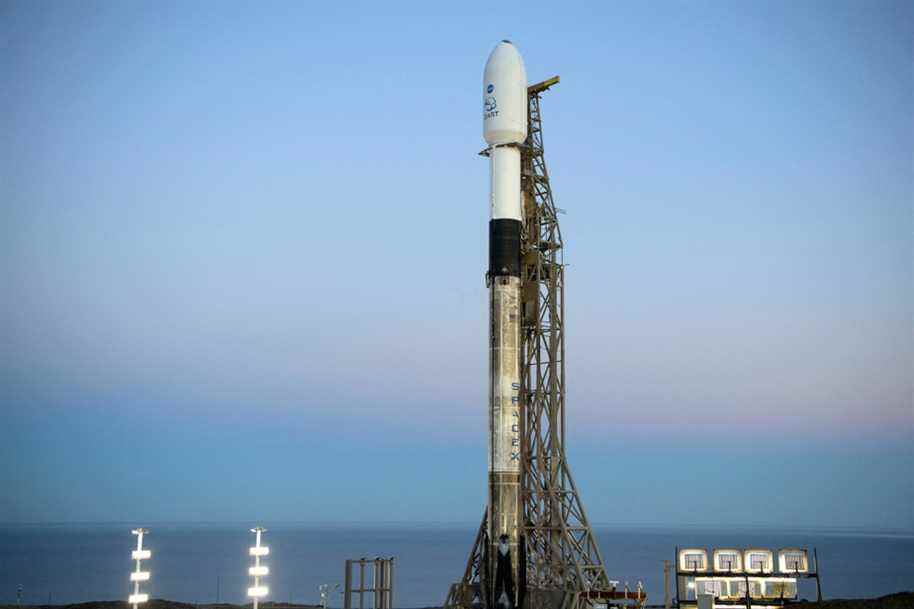(Washington) It’s a Hollywood-worthy scenario, yet very real. NASA is preparing to take off on the night of Tuesday to Wednesday an unprecedented mission: by projecting a spacecraft at 24,000 km / h against an asteroid, it hopes to change its trajectory and thus help humanity protect itself from a potential collision in the future.
This test “will be historic,” said Tom Statler, a NASA scientist participating in this mission, at a press conference. “For the first time, humanity will change the movement of a natural celestial body in space. ”
This is only a dress rehearsal, the target asteroid does not represent a threat to Earth. But the goal is taken very seriously by the US space agency.
It currently lists just over 27,500 asteroids of all sizes close to Earth and “none of them represents a threat in the next hundred years,” reassured Thomas Zurbuchen, director for scientific missions at the NASA.
But experts estimate that they are only aware of 40% of asteroids measuring 140 meters and more – those capable of devastating an entire region – with the majority yet to be discovered. The idea is therefore to develop a technique to protect against it in the event of a future threat.
The mission, dubbed DART, will take off from California’s Vandenberg base aboard a SpaceX Falcon 9 rocket at 10:21 p.m. local time on Tuesday.
A few hours before takeoff, the weather conditions remained favorable for a launch on time, SpaceX tweeted.
10 short minutes
The ship is smaller than a car, flanked by two long solar panels. It is due to strike next fall, in about ten months, an asteroid the size of a football field (about 160 meters in diameter), which will then be located eleven million kilometers from Earth.
The asteroid is called Dimorphos and is in fact a moon, orbiting a larger asteroid, named him Didymos (780 meters in diameter).
To circle the large asteroid, Dimorphos currently takes 11 hours and 55 minutes. Scientists expect to reduce its orbit by about 10 minutes.
“It’s a very small change, but it might be all we need to deflect an asteroid having a collision course with Earth, if we ever had to, provided we discovered this asteroid soon enough. ”, Explained Tom Statler.
The exact effect the impact will have is not known at the moment, as it depends in particular on the composition of the asteroid.
It is this precise change in trajectory, which will then be measured using telescopes from Earth, that scientists want to determine. The results will be used in calculations to help define, in the future, how much mass must be projected against a given type of asteroid to cause sufficient deflection.
Explosion
Is Dimorphos made of solid or more porous rocks? Scientists do not know, and the asteroid will not appear in images transmitted by the ship until just an hour before the collision. Its shape, round or oblong, will only be clear 2 minutes before.
Then the explosion, and radio silence.
The following images will come from a small satellite developed by the Italian Space Agency. It will be released by the main ship ten days before impact.
Three minutes after the collision, it will fly over Dimorphos, in order to observe the effect of the shock and, with a little luck, the crater on the surface.
The orbit of the large asteroid Didymos around the Sun could also be slightly modified, due to the gravitational relationship with its moon. But so little that the change cannot be measured. No chance therefore that the asteroid is placed on a new potentially dangerous path for the blue planet.
The total cost of the mission – the first interplanetary launched by Elon Musk’s company for NASA – is $ 330 million.
Other techniques are being considered to deflect an asteroid. For example by carrying out a nuclear explosion near one of them, not to destroy it but to divert its trajectory by ricochet. The gravitational force of a ship, flying close to an asteroid for a long time, could also be used.
But the technique tested here, known as kinetic impact, is by far the most mature. As long as it proves itself during this test.
